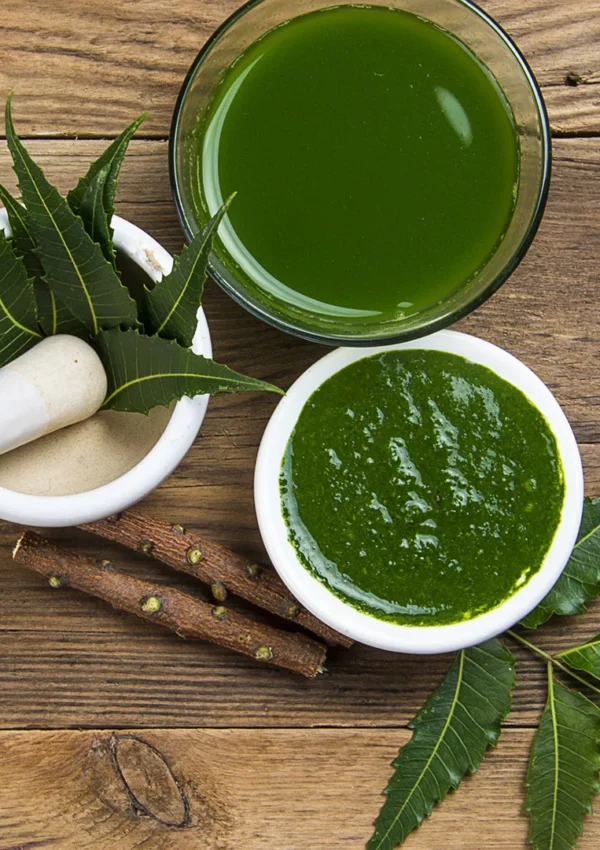Image credit: Insider
Do you keep on wondering Why does my face skin turn red for no reason? Also, do you wonder that your experience the problem of “skin suddenly red and burning on face”? Well! Dealing with facial redness can be frustrating and distressing. Whether it’s caused by acne, irritation, or underlying skin conditions, finding ways to reduce redness on the face is a common concern. In this article, we will explore some main causes of face redness and 15 effective techniques to help calm and soothe redness, promoting a more balanced and even complexion. So, if you’ve been wondering how to reduce redness on your face quickly and naturally, read on for some helpful tips.
Understanding the root cause of your facial redness is crucial. It could be due to acne, rosacea, sensitive skin, allergies, or other factors. Identifying the cause will help you choose the most appropriate treatment.
Why is my face red?
Lets delve deeper into understanding the Factors Behind Facial Redness:
Facial redness can be a bothersome and sometimes embarrassing condition. It can leave you wondering what causes redness on the face and how to address it effectively. Let’s explore the common factors that contribute to facial redness, helping you gain a better understanding of this issue.
1.1. Rosacea: One of the primary causes of facial redness is a chronic skin condition called rosacea. It is characterized by persistent redness, visible blood vessels, and sometimes small bumps on the face. Triggers like sun exposure, hot weather, spicy foods, and alcohol can worsen rosacea symptoms.
1.2. Acne: Inflammatory acne, such as papules, pustules, and cysts, can cause redness on the face. The presence of bacteria, excess oil production, and clogged pores can contribute to the development of acne and subsequent redness.
1.3. Allergies: Allergic reactions to certain substances, such as pollen, pet dander, or specific skincare products, can cause facial redness. This redness is often accompanied by itching, swelling, and other allergic symptoms.
1.4. Sunburn: Excessive sun exposure without proper protection can lead to sunburn, resulting in redness and inflammation on the face. UV radiation damages the skin and triggers the body’s inflammatory response.
1.5. Sensitive Skin: Some individuals have naturally sensitive skin that is prone to redness and irritation. Environmental factors, harsh skincare products, and temperature changes can all contribute to facial redness in people with sensitive skin.
1.6. Eczema: This chronic skin condition is characterized by red, itchy, and inflamed patches on the skin. When eczema affects the face, it can lead to facial redness and discomfort.
1.7. Irritants: Various irritants present in skincare products, such as fragrances, preservatives, and harsh chemicals, can cause facial redness, especially in individuals with sensitive skin.
1.8. Dermatitis: Contact dermatitis occurs when the skin comes into direct contact with an irritating substance or allergen. This can lead to redness, itching, and inflammation on the face.
1.9. Temperature Changes: Exposure to extreme temperatures, whether hot or cold, can cause temporary facial redness. Blood vessels in the skin dilate or constrict in response to temperature changes, leading to redness.
1.10. Genetics: Some people may have a genetic predisposition to facial redness. Certain inherited conditions or traits can make blood vessels in the face more prone to dilation, resulting in redness.
It’s important to note that the causes of facial redness can vary from person to person. Identifying the specific cause of redness is essential for implementing an appropriate treatment plan. Sometimes there is a problem of red patches on skin not itchy or sometimes the skin itches a lot. Consulting with a dermatologist can help you pinpoint the underlying factors contributing to facial redness and guide you towards effective solutions.
Reasons I could be Making face redness worse
Let’s now discuss common factors that can contribute to worsening facial redness, helping you make informed choices for healthier skin.
- Excessive Sun Exposure
One of the primary culprits that can worsen facial redness is excessive sun exposure. The sun’s harmful UV rays can trigger inflammation and dilate blood vessels, leading to increased redness and irritation. To protect your skin, it’s crucial to limit your sun exposure, especially during peak hours. Always wear sunscreen with a high SPF, use protective clothing and accessories like hats and sunglasses, and seek shade whenever possible.
Also see: Why Using A Sunscreen is Important in Daily Skin Care Regimen
- Harsh Skincare Products
Using harsh skincare products that contain irritants or harsh chemicals can aggravate facial redness. Ingredients like alcohol, fragrances, and certain acids can strip the skin of its natural oils, leading to dryness, inflammation, and increased redness. Opt for gentle, fragrance-free cleansers, moisturizers, and sunscreen formulated for sensitive skin. Look for products that are hypoallergenic and non-comedogenic to minimize the risk of further irritation.
- Hot Water and Steam
While hot showers and steamy baths may feel relaxing, they can contribute to facial redness. Hot water can strip the skin of its natural oils, leading to dryness and irritation. It’s advisable to use lukewarm water instead when cleansing your face and to limit the duration of your showers. Pat your face dry gently with a soft towel, avoiding any harsh rubbing or scrubbing.
- Excessive Scrubbing or Rubbing
Aggressive scrubbing or rubbing of the skin can worsen facial redness. Vigorous exfoliation, using harsh washcloths, or scrubbing brushes can irritate the skin, leading to increased redness and inflammation. Instead, opt for gentle cleansing techniques using your fingertips or a soft washcloth. Be gentle and avoid applying excessive pressure while washing or drying your face.
- Unhealthy Lifestyle Habits
Certain lifestyle habits can also contribute to facial redness. Smoking, excessive alcohol consumption, and a poor diet can impact the health of your skin. Smoking restricts blood vessels and reduces oxygen flow to the skin, while alcohol can dilate blood vessels and cause flushing. Consuming a balanced diet rich in fruits, vegetables, and omega-3 fatty acids can support skin health and minimize redness.
- Stress and Emotional Triggers
Stress and emotional triggers can have a direct impact on facial redness. Emotional stress can cause the release of stress hormones, leading to increased blood flow and dilation of blood vessels. Practice stress management techniques such as meditation, deep breathing exercises, and engaging in activities that promote relaxation to help minimize the impact of stress on your skin.
How do I get rid of redness on my face
1. Gentle Cleansing:
Use a mild, non-irritating cleanser to wash your face. Harsh cleansers can strip the skin of its natural oils, leading to dryness and increased redness.
2. Moisturize Regularly:
Keep your skin well-hydrated to reduce dryness and inflammation. You should look for some good quality moisturizers which has soothing ingredients such as aloe vera or chamomile.
3. Cool Compress:
Apply a cool compress to your face to constrict blood vessels and reduce redness. You can use a soft cloth soaked in cold water or a chilled green tea bag.
4. Calming Masks:
Try using a calming face mask made with natural ingredients like cucumber, oatmeal, or chamomile. These can help soothe redness and irritation.
5. Sun Protection:
Protect your skin from harmful UV rays by wearing a broad-spectrum sunscreen with a high SPF. Sun exposure can aggravate redness and cause further damage to sensitive skin.
6. Avoid Triggers:
Identify triggers that worsen your facial redness, such as spicy foods, alcohol, hot beverages, or extreme temperatures. Limit your exposure to these triggers to minimize redness.
7. Aloe Vera Gel:
Aloe vera has anti-inflammatory properties that can help reduce redness and soothe irritated skin. Apply pure aloe vera gel to your face and leave it on for 15 minutes before rinsing.
8. Green Tea:
Brew a cup of green tea and let it cool. Apply the cooled tea to your face using a cotton ball. Green tea contains antioxidants and anti-inflammatory compounds that can alleviate redness.
9. Cucumber Slices:
Place chilled cucumber slices on your face for a refreshing and calming effect. Cucumbers have a high water content and can hydrate and soothe red, irritated skin.
10. Over-the-Counter Products:
Look for skincare products specifically formulated to reduce redness, such as creams or serums containing ingredients like niacinamide or green tea extract. Products like Face redness remove cream, Face redness cream can provide a good face redness solution.
11. Consult a Dermatologist:
If your facial redness persists or worsens, it’s advisable to consult a dermatologist. They can assess your condition and recommend appropriate treatments or medications. They can give you some good face redness medicine for the face redness treatment.
12. Avoid Scrubbing:
Avoid harsh exfoliation or scrubbing, as this can further irritate the skin and exacerbate redness. Opt for gentle exfoliation methods, such as using a soft brush or a mild chemical exfoliant.
13. Stress Management:
Stress can trigger facial redness, so it’s essential to find healthy ways to manage stress levels. Practicing relaxation techniques such as deep breathing, yoga, or meditation also helps.
14. Patience and Consistency:
Reducing facial redness takes time and consistent effort. Be patient and follow a regular skincare routine that includes gentle cleansing, moisturizing, and protecting your skin from irritants.
Some Soothing Home Remedies for Face Redness and Itching
Dealing with face redness and itching can be an uncomfortable and frustrating experience. Whether caused by environmental factors, skin conditions, or allergies, these symptoms can significantly impact our confidence and overall well-being. While it’s essential to consult a healthcare professional for a proper diagnosis and treatment, there are also several soothing home remedies that can provide relief. If you are wondering How to cure redness on face overnight naturally with home remedies then you should follow the following techniques.
lets check out How to get rid of face redness quickly:
- Cold Compress
One of the simplest and most readily available remedies for face redness and itching is a cold compress. Applying a cold compress to the affected area can help reduce inflammation and soothe irritation. You can make a cold compress by wrapping a few ice cubes in a clean cloth or using a cold, damp towel. Gently press it against your face for a few minutes, repeating as needed throughout the day. If you keep on thinking “How to cure redness on face overnight naturally” then this technique can be quite helpful.
Also see: 10 Simple and Best Home Remedies for Foot Pain
Home Remedies to Get Fair and Glowing Skin
- Aloe Vera Gel
Aloe vera gel has long been renowned for its soothing properties and is commonly used to alleviate various skin issues, including face redness and itching. The gel contains anti-inflammatory compounds that can calm irritated skin and promote healing. You can get the gel out from an aloe vera leaf and apply it directly to the affected areas. Leave it on for about 20 minutes before rinsing it off with cool water. Repeat this process a few times a day for relief.
- Oatmeal
Oatmeal is another excellent natural remedy for reducing face redness and itching. It has anti-inflammatory properties that can soothe irritated skin and relieve itching. To create an oatmeal mask, grind plain oats into a fine powder and mix it with water to form a paste. Apply the paste to your face, focusing on the affected areas, and leave it on for 15 to 20 minutes. Rinse off with lukewarm water and pat your face dry. This remedy can be repeated several times a week.
- Chamomile Tea
Chamomile tea has been used for centuries as a calming and anti-inflammatory remedy for various skin conditions. Brew a cup of chamomile tea and allow it to cool completely. Then, dip a clean cloth or cotton ball into the tea and gently apply it to your face. The chamomile’s soothing properties will help reduce redness and itching. You can repeat this process multiple times a day for relief.
- Honey
Honey is a natural humectant and has moisturizing and anti-inflammatory properties that can help soothe irritated skin. Apply a thin layer of raw, organic honey to the affected areas of your face and leave it on for about 20 minutes. Simply Rinse with some lukewarm water and then pat dry. Honey can be used as a gentle face mask to reduce redness and provide relief from itching.
- Cucumber Slices
Cucumber slices have a cooling effect on the skin and can help alleviate face redness and itching. Place chilled cucumber slices on the affected areas of your face and leave them on for about 15 minutes. The cool temperature and the natural compounds in cucumbers can provide immediate relief and reduce inflammation.
Bottom Line
In conclusion, dealing with facial redness can be challenging, but with the right approach and care, you can significantly reduce its appearance. By identify the causes of face redness and following these tips to reduce face redness, you can work towards achieving a calmer and more even complexion. Remember to be gentle with your skin, identify triggers, and seek professional advice if needed.








Gracias por los consejos. Te mando un beso.